NAVYPEDIA
 Support the project with paypal
Support the project with paypal
Photo

Pegasus 1979
Ships
| No | Name | Yard No | Builder | Laid down | Launched | Comm | Fate |
|---|---|---|---|---|---|---|---|
| PHM1 | Pegasus | Boeing, Renton | 10.5.1973 | 9.11.1974 | 9.7.1977 | stricken 7.1993 | |
| PHM2 | Hercules | Boeing, Renton | 12.9.1980 | 13.4.1982 | 18.12.1982 | stricken 7.1993 | |
| PHM3 | Taurus | Boeing, Renton | 30.1.1979 | 8.5.1981 | 10.10.1981 | stricken 7.1993 | |
| PHM4 | Aquila | Boeing, Renton | 10.7.1979 | 16.9.1981 | 26.6.1982 | stricken 7.1993 | |
| PHM5 | Aries | Boeing, Renton | 7.1.1980 | 5.11.1981 | 18.9.1982 | stricken 7.1993 | |
| PHM6 | Gemini | Boeing, Renton | 13.5.1980 | 17.2.1982 | 13.11.1982 | stricken 7.1993 |
Technical data
| Displacement standard, t | 198 light |
|---|---|
| Displacement full, t | PHM1: 235 PHM2-6: 241 |
| Length, m | 36.0 wl 40.5 oa 44.7 with foils retracted |
| Breadth, m | 8.60 hull 14.5 over aft foils |
| Draught, m | 7.10 max 1.90 with foils retracted 2.70 foilborne |
| No of shafts | 3 water jets (1 for gas turbine / 2 for cruising diesels) |
| Machinery | 1 General Electric LM-2500 PB102 gas turbine / 2 MTU 8V331TC81 diesels |
| Power, h. p. | 18000 / 1630 |
| Max speed, kts | 50 / 11 on diesels |
| Fuel, t | gas turbine oil + diesel oil 50 |
| Endurance, nm(kts) | 600(40) or 1200+(11) |
| Armament | 2 x 4 Harpoon SSM (8 RGM-84), 1 x 1 - 76/62 Mk 75 |
| Electronic equipment | PHM1: SPS-64(V)1, Mk 94 radars, ALR-66 ECM suite, 2x LADS decoy RLs PHM2-6: SPS-64(V)1, Mk 92 radars, SLQ-650 ECM suite, 2 Mk 34 RBOC decoy RLs |
| Complement | 21 |
Graphics
Project history
Although neither Flagstaff nor Tucumcari was reproduced, Boeing did use Tucumcari as the basis for the Italian Sparviero class missile boats. Israel ordered two 'Super Flagstaffs' with Harpoon missiles in 1978. Moreover, Boeing experience with Tucumcari presumably shows in the design of the next-generation hydrofoil combatant, the missile hydrofoil Pegasus.
The missile hydrofoils were originally conceived by Admiral Zumwalt as successors to the missile-armed Asheville class 'tattletales', that is, as a means of countering Soviet missile-armed surface craft, particularly in restricted waters. They had the important advantage of very high speed even in rough weather; it must have appeared that their small size would equate to low unit cost. The PHM programme was, for a time, a NATO-wide one, the Italian and West German governments participating in the design. Germany was to have built twelve. However, as costs rose only the United States, which planned thirty, remained in the programme. Cynics suggested strongly that the PHM was a solution in search of a problem, and (with the programme reduced to six craft) PHM2-6 were cancelled on 15 April 1977. However, they were reinstated that August at the request of Congress. PHM2 was to be unarmed, and by 1981 it appeared unlikely that further units would be built. One of the more curious aspects of the PHM story was the attempt to find alternative missions, a Sea Phoenix variant for fleet air defence coming close to the formal proposal stage within the Department of Defense.
Modernizations
None.
Naval service
: No significant events.
 HOME
HOME FIGHTING SHIPS OF THE WORLD
FIGHTING SHIPS OF THE WORLD UNITED STATES OF AMERICA
UNITED STATES OF AMERICA COASTAL FORCES
COASTAL FORCES PEGASUS missile hydrofoils (1977 - 1983)
PEGASUS missile hydrofoils (1977 - 1983)

